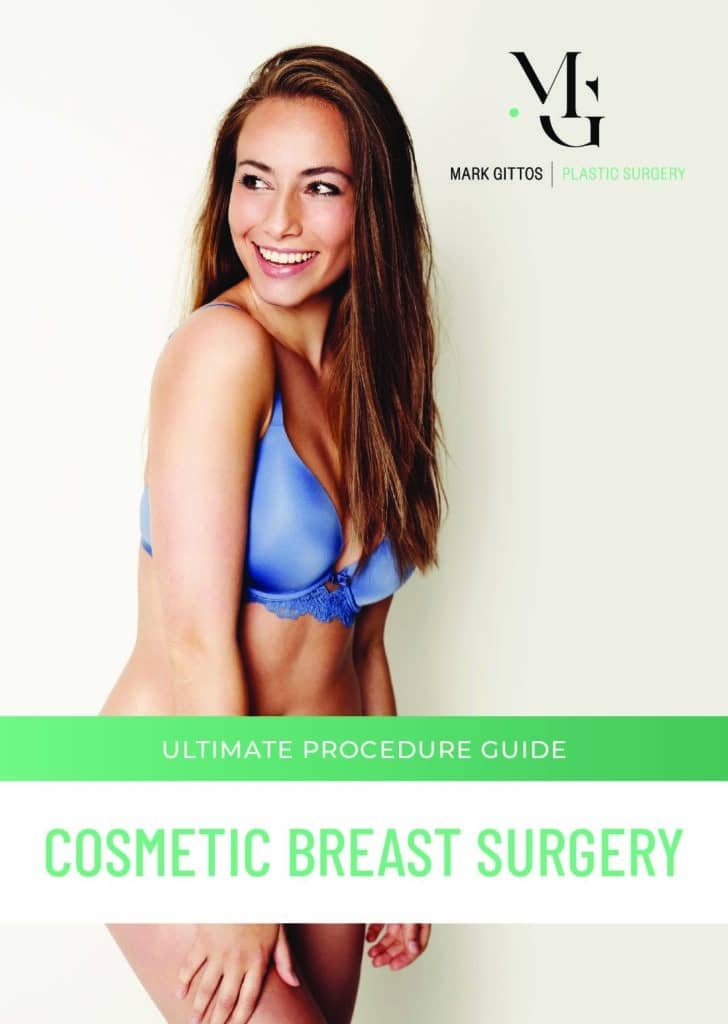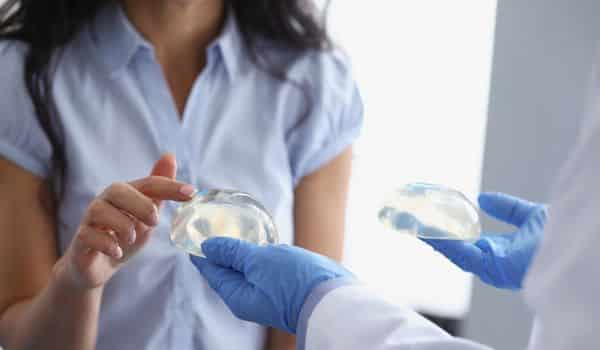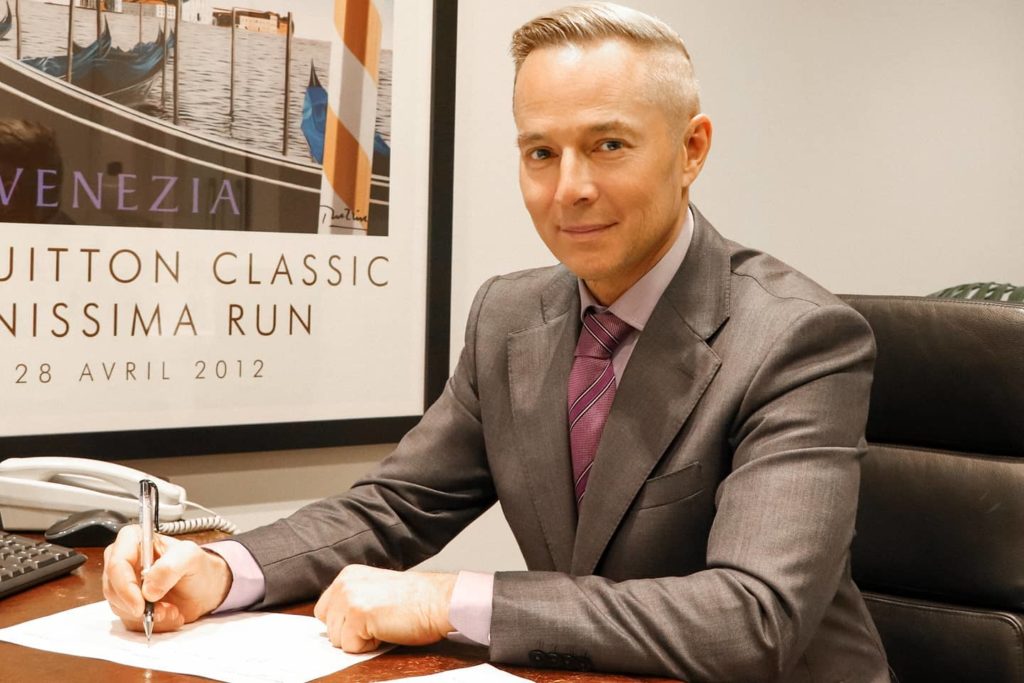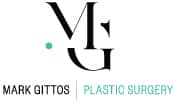Breast Implant Filling: Saline vs Silicone – Which is better?
When you’re considering going up in breast size, one of the questions you’ll ask yourself is: what type of breast implant filling should I choose? Saline-filled or silicone-filled are available options. But which breast implant filling is the best for you?
Most women prefer silicone-based breast implants because they can provide a more natural look and feel and they don’t rupture easily.
Many women in the USA choose saline implants because they require a smaller surgical incision and their size could be adjusted later on without surgery. The problem with saline implants is the unnatural feeling of a “water balloon” or “water hammer effect”, they rupture more easily and hence few surgeons offer saline implants.
Dr Mark Gittos is one of the top cosmetic and reconstructive plastic surgeons in New Zealand and UK. He will help you understand all the risks and benefits of different breast implants and decide which implant filling you should choose.
Download Dr Mark Gittos’ Guide to Cosmetic Breast Surgery

1. Silicone Breast Implants
Silicone gel breast implants are the most popular implant-filling type used around the world. These implants have a silicone outer shell and are filled with silicone gel. The silicone gel is a thick and sticky fluid that feels a lot like natural breast fat.
Silicone implants are pre-filled, which means they already contain the silicone gel before they’re inserted into the breasts. These implants come in different sizes and their outer shells can be either smooth or textured. Moreover, the flexibility of silicone allows more variety in shapes (teardrop, round, anatomical, etc.) and projection to give even more natural results.
Moreover, there’s a more advanced type of silicone-filled implant called the “gummy bear” breast implant. The consistency of the silicone gel inside gummy bear implants is thicker than the gel inside traditional silicone implants. As a result, gummy bear implants are firmer than regular silicone breast implants.
Are silicone breast implants safe?
A lot of research has gone into the safety and effectiveness of silicone-based breast implants. Although claims have been made about the link between ruptured silicone-filled implants and a greater risk of serious diseases, silicone implants are now considered safe for use during both breast augmentation and breast reconstruction.
Silicone gel breast implants were first introduced in the 1960s. In 1962, a woman named Timmie Jean Lindsey received the very first silicone-based breast implant.
As the popularity of these implants increased, so did the claims of supposed risks. During the 1980s, some people claimed a connection between silicone gel implants and a greater risk of immunological disorders (lupus, rheumatoid arthritis, fibromyalgia).
Because of these claims, in 1992, women who wanted to get implants for breast reconstruction could only get saline-based implants.
Over the next 14 years, extensive research was put into determining the safety of silicone implants. Eventually, in 2006, after no connection was found between silicone implants and serious health concerns, they became approved for sale again.
Other concerns were raised because silicone implants contain platinum and people were worried about the risks it might cause inside the body. However, extensive research and studies did not find that platinum in breast implants can pose any risk.
What happens if a silicone implant ruptures?
If a silicone-filled implant ruptures, the silicone will not migrate in the body. Instead, the silicone stays trapped inside the surrounding fibrous tissue that forms around the implant.
This is known as a “silent rupture” because you may not notice a ruptured silicone gel breast implant right away, or at all.
Although in some cases, a ruptured silicone implant might eventually cause breast pain, breast thickening, or changes in the contour or shape of the breast.
In case of a silicone implant rupture, Dr Mark Gittos will likely recommend the surgical removal of the implant. If you wish, a new implant can be inserted at the same time.
You can make sure your implants are ok by regularly visiting your plastic surgeon. Your surgeon will be able to assess the condition of your breast implant by ultrasound or magnetic resonance imaging (MRI).
It’s recommended that you get an MRI 3 years after getting a silicone gel implant and once every 2 years after that.
2. Saline Breast Implants

Saline breast implants have an outer silicone shell and are filled with sterile saline water. Unlike silicone implants, saline-based implants are not pre-filled; they’re inserted empty into the breasts and then filled once in place.
Saline-filled implants can give your breasts fullness, firmness, and a uniform shape.
There is a type of saline implant called structured saline breast implant. These are also filled with sterile salt water but they contain an additional inner structure that can make the implant feel more natural.
Are saline breast implants safe?
According to studies, just like silicone-filled implants, saline breast implants are safe for breast augmentation and breast reconstruction surgeries. Saline is basically sterile salt water that’s quickly reabsorbed into the body without causing any problems if the implant ever ruptures. It’s the same solution given in IV fluids to rehydrate the body.
What happens if a saline implant ruptures?
If a saline implant ruptures, the saline fluid will leak out and the implant will deflate and collapse.
The leaking saline will be absorbed and expelled naturally by the body without any health concerns.
Nonetheless, you’ll probably need surgery to remove the collapsed outer shell of your saline implant and a new implant can be inserted at the same time.
What Is the Best Type Of Breast Implant Filling?
Based on your anatomy, body type, and your desired aesthetic outcomes, Dr Gittos will probably recommend one type of implant over the other to give you the best possible surgical results.
Most people prefer silicone gel implants because:
- They feel more like real breast tissue
- They are less likely to rupture than saline implants
- They are less likely to cause rippling (visible implant edges under the skin) than saline-filled implants. Implant rippling can distort the shape of the breast and make it look unnatural.
- They come with more options – numerous projections and shapes
Since silicone filling mimics the texture of natural breast tissue, most women prefer the look and feel of silicone gel implants over saline implants.

Therefore, a lot of patients opt for silicone implants because it gives them a better chance of getting extremely natural bigger breasts.
On the other hand, patients might choose saline-filled implants because:
- They require a smaller incision: saline implants are not pre-filled the shell is filled with sterile saline fluid after it’s inserted into the breast. As a result, saline-based implants require a smaller incision than pre-filled silicone gel breast implants
- They’re adjustable: saline implants may be adjusted without surgery even months after your breast augmentation surgery. If you decide to increase or decrease the size of your breasts, Dr Gittos can use a syringe to add more fluid or remove it
Nonetheless, with the right plastic surgeon, you’ll get the breast size you want from the first go, and you wouldn’t need to adjust anything later on.
In general, 95%+ of Dr Mark Gittos’s patients favour silicone-filled breast implants over saline implants. However, the choice between saline and silicone is entirely up to you.
Make sure you choose a plastic surgeon who you can have an open and honest discussion with about your cosmetic concerns and breast goals.
Dr Gittos will talk you through the best and worst-case scenarios and make sure you understand the risks and benefits of each implant filling before coming to a decision.
What Are the Risks Of Breast Implants?
Breast implants with both saline and silicone filling share common risks that include:
- Breast pain
- Infection after breast implant surgery
- Decreased nipple and breast sensation (usually temporary)
- Implant leakage or rupture (becomes more likely as the implant ages)
- Can make breastfeeding more difficult
- Capsular contracture: Scar tissue that hardens and tightens around the breast’s soft tissue and distorts the shape of the breast implant
- Irreversibility: Implants permanently change your breast tissue. If you decide to have your implants removed, later on, your breasts may not go back to how they looked before surgery
- Breast implant-associated anaplastic large cell lymphoma (BIA-ALCL): This is a rare form of T-cell lymphoma that is associated with the use of specific kinds of textured breast implants
- Breast implant illness (BII): Some women who have had breast implants reported experiencing fatigue, memory loss, rash, brain fog, and joint pain. However, it’s still unclear whether these symptoms are a result of breast implants or other conditions
Correcting some of these complications might require another surgery to either remove or replace the implant.
To avoid any possible risks or complications after your breast augmentation surgery, it’s important to choose a plastic surgeon with plenty of experience and implant knowledge.
Dr Mark Gittos uses his immense surgical skill and familiarity with different implant types to make sure you get the best natural results that can last you for a really long time.
Read about Breast Augmentation Surgery with Dr Gittos
Medical References about Breast Implant Filling
- Silicone Toxicology – Safety of Silicone Breast Implants – NCBI Bookshelf
- The Evolution of Breast Implants – PMC
- A guide to breast implants for the non-breast specialist – PMC
- Breast implant illness: a topic in review – PMC
About Dr Mark Gittos FRACS (Plast) – New Zealand Plastic Surgeon
Practice locations in Herne Bay Auckland, Northland and Bay of Plenty – Kerikeri, Whangarei, New Plymouth & Tauranga
Dr Mark Gittos is a leading Specialist Plastic Surgeon and operates a practice in Herne Bay, Auckland and in the UK. The practice focuses on both surgical and non-surgical procedures, each designed to help restore, improve or change a physical characteristic or problem. The first step in every case is to talk through your personal requirements and explore all the options, before deciding on the most effective solution.
Dr Mark Gittos offers high quality, natural-looking cosmetic surgery results and is highly experienced in Breast, Body and Face Surgery having performed over 4000 Surgeries in the last 26 years. With worldwide expertise Dr Gittos is an expert in breast, face and body surgery for men & women.
Naturally, before any treatment is begun, we will explain clearly the advantages and risk factors; so that you have the information you need to make an informed decision that is best for you. Visit the practice to find out more.

NEXT STEPS
Please NOTE: Dr Gittos only performs surgery on non-smoker patients with a BMI less than 30. To check your BMI please visit the NZ Heart Foundation website. For help giving up smoking before surgery visit the Smoke Free website
Do your Research
- Read the Website and Blogs relevant to your procedure
- Browse our Frequently Asked Questions including how to choose a Surgeon for your procedure
- Download and read the FREE Guides to Surgery
What to Bring to your Plastic Surgeon Consultation
- Bring a friend or relative to help discuss the information and your choices
- Take lots of notes and read the documents provided thoroughly
- Dress in simple clothes as you may need to undress for examination
- Bring your medical referral and any relevant medical documents or test results
Book your Initial Surgery Consultation
- A Referral from your GP or specialist is helpful but NOT essential – you can have a consultation without a GP Referral
- Email us or Call on 09 529 5352 to arrange your surgeon consultation appointment.
- Book a consultation with Dr Gittos by paying the Consultation Fee – $325 incl GST
Traveling for Surgery? – Consider post-surgery luxury recovery in a Hotel with LuxeCare
Please contact us to arrange to book a consultation with our Specialist Plastic Surgeon or to speak with our Patient Care Advisor.
Send an enquiry form today or phone 09 529 5352 during Clinic Hours.
